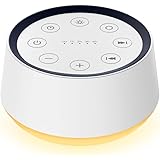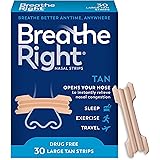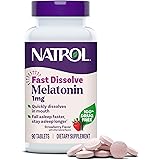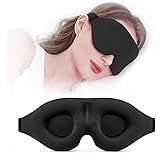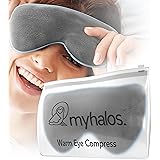Navigating the complex world of mattress shopping can feel like an overwhelming journey, especially when countless options promise the elusive “perfect night’s sleep.” Many people, much like the expert in the accompanying video, once settled for the cheapest option, only to realize the profound impact a quality mattress has on daily well-being. This guide expands on the insights shared in the video, providing a comprehensive framework to help you choose the right mattress, ensuring your investment truly supports your sleep health.
Your mattress is more than just a piece of furniture; it’s the foundation for restorative sleep. Given that we spend roughly one-third of our lives in bed, selecting the ideal mattress for your specific needs is a decision that significantly influences your physical comfort, mental clarity, and overall health. Let’s delve deeper into how to identify when it’s time for an upgrade and what crucial factors to consider during your search.
Is It Time for a New Mattress? Recognizing the Signs
Before embarking on the exciting quest for a new bed, first assess your current sleep situation. The video highlights several clear indicators that signal your mattress might be past its prime. Think of your mattress as a loyal companion; after about 10 years, its ability to provide optimal support often diminishes, much like an old pair of running shoes losing their bounce.
Physical signs of wear and tear, such as visible sags, dips, or lumps, are another undeniable clue. These deformities act like potholes in your sleep landscape, preventing proper spinal alignment. Moreover, if you consistently wake up with aches and pains—especially in your back, hips, or shoulders—your mattress is likely failing to offer the necessary pressure relief and support. While a complete replacement is ideal, a high-quality mattress topper can sometimes serve as a temporary upgrade, offering a fresh layer of comfort and support without the full investment.
Decoding Mattress Types: Your Foundation for Rest
The marketplace offers a diverse array of mattress constructions, each with distinct characteristics that cater to different preferences. Understanding these fundamental types is akin to knowing the basic ingredients of a recipe; it helps you anticipate the final result. The three primary categories—innerspring, memory foam, and hybrid—form the backbone of today’s mattress market, with variations like latex foam also playing a significant role.
Innerspring Mattresses: The Traditional Choice
For centuries, innerspring mattresses have provided a familiar sleep experience. These beds primarily rely on a system of steel coils for support, creating a buoyant feel that keeps sleepers “on top” of the mattress rather than sinking into it. This construction often translates to excellent airflow, making them a popular choice for those who tend to sleep hot.
Traditional innerspring models offer robust support and a distinctive bounciness, which can be beneficial for ease of movement. However, their simple design might not offer the same level of contouring or motion isolation as foam alternatives. Modern variations often incorporate a thin layer of foam or padding over the coils to enhance comfort, but their core identity remains rooted in spring-based support.
Memory Foam Mattresses: Contouring Comfort
Memory foam mattresses are renowned for their unique ability to contour precisely to the body’s shape, distributing weight evenly and relieving pressure points. This material, originally developed by NASA, offers a sensation of being “cradled” or “in” the bed, a stark contrast to the floating feel of an innerspring. Its viscoelastic properties allow it to soften in response to body heat and pressure, providing exceptional cushioning for sensitive areas like the shoulders and hips.
While memory foam excels at pressure relief and motion isolation—meaning you’re less likely to feel your partner tossing and turning—it can sometimes retain body heat. To counteract this, many contemporary memory foam mattresses incorporate cooling technologies such as gel infusions or open-cell structures. Furthermore, various foam types, including latex foam, offer different feels. Latex, for instance, provides a more responsive and naturally breathable alternative to traditional memory foam, often appealing to eco-conscious buyers seeking a bouncier, yet still conforming, surface.
Hybrid Mattresses: The Best of Both Worlds
Hybrid mattresses ingeniously combine the benefits of both innerspring and foam constructions. Typically, they feature a base layer of individually wrapped coils, which provide robust support, responsiveness, and excellent airflow. These coils are then topped with multiple layers of various foams—memory foam, latex, or specialized cooling foams—to deliver contouring comfort and pressure relief.
This “best of both worlds” approach results in a highly versatile mattress that balances support, pressure relief, durability, and often superior cooling compared to all-foam beds. For many, a hybrid offers the ideal compromise, providing the deep contouring desired by side sleepers while maintaining the sturdy support preferred by back and stomach sleepers, often with enhanced edge support and greater longevity.
Finding Your Perfect Fit: Mattress Sizes and Dimensions
Selecting the appropriate mattress size is foundational to ensuring adequate space for comfortable sleep, whether you sleep solo, with a partner, or with furry companions. The right dimensions can transform your bedroom into a true sanctuary. Here’s a breakdown of common mattress sizes:
-
Twin (38″ x 75″): Ideal for children or single adults in compact spaces. It’s like a personal island of slumber.
-
Twin XL (38″ x 80″): Offers extra length compared to a standard Twin, making it perfect for taller individuals or common in college dorm rooms.
-
Full (54″ x 75″): Provides more width than a Twin, suitable for a single adult who desires more room to spread out, or for very cozy couples.
-
Queen (60″ x 80″): The most popular choice, offering ample space for single adults and comfortable quarters for most couples.
-
King (76″ x 80″): Maximizes width, allowing couples to spread out freely, or perfect for those who share their bed with pets or children.
-
Split King (two 38″ x 80″): Essentially two Twin XL mattresses side-by-side, excellent for couples with differing firmness preferences or those using adjustable bases.
-
California King (72″ x 84″): Slightly narrower but longer than a standard King, it’s the go-to for exceptionally tall individuals or those who prioritize legroom.
The Crucial Role of Your Sleeping Position
Your preferred sleeping position is arguably the most critical factor in determining the ideal mattress firmness and construction. Just as a tailor custom-fits a suit, your mattress should be custom-fitted to your unique sleep posture. Maintaining proper spinal alignment is the golden rule, preventing pressure buildup and promoting restorative sleep.
-
Back Sleepers: These sleepers generally require a balance of support and contouring. The mattress should allow the hips to sink slightly while supporting the natural curve of the spine. A medium-firm feel, often around a 6.5 on a 1-10 firmness scale, is usually a safe bet, providing enough give without compromising support.
-
Side Sleepers: To avoid painful pressure points at the shoulders and hips, side sleepers typically thrive on softer mattresses. These beds, generally below 6.5 on the firmness scale, allow these prominent body parts to sink adequately, cradling the body and maintaining a straight spinal alignment from neck to tailbone. Think of it as sinking into a cloud, but with underlying support.
-
Stomach Sleepers: Unlike side sleepers, stomach sleepers need a firmer mattress, typically above 6.5. The primary concern here is preventing the hips from sinking too deeply, which can overarch the spine and lead to lower back pain. A firm surface keeps the body elevated and aligned, minimizing strain.
It’s important to remember that mattress firmness is not absolute; it’s relative to your body weight, which we will discuss next. A mattress rated “medium-firm” might feel softer to a heavier individual and firmer to a lighter one.
Considering Body Weight: A Matter of Perception
Your body weight significantly influences how a mattress feels and performs. This is because firmness and support are perceived differently based on the pressure exerted on the mattress. The video categorizes sleepers into lightweight (under 130 lbs), average weight (130-250 lbs), and heavyweight (over 250 lbs), and these distinctions are crucial for informed decision-making.
Lightweight sleepers often find mattresses firmer than advertised, as they don’t exert enough pressure to fully engage the comfort layers. Conversely, heavyweight sleepers tend to perceive mattresses as softer, sinking deeper into the layers. For those over 250 lbs, a highly supportive mattress with a robust innerspring or hybrid core is often recommended to ensure durability and prevent premature sagging. These constructions offer the foundational strength needed to maintain alignment and comfort over time, preventing the feeling of “bottoming out” against the bed’s core.
Partners in Sleep: Shared Bed Considerations
When sharing a bed, your mattress choice becomes a collaborative decision, balancing individual needs with communal comfort. Two key factors come into play for couples: edge support and motion isolation.
Edge Support: Maximizing Your Sleep Surface
Strong edge support means the perimeter of the mattress maintains its integrity, preventing a feeling of rolling off the side. For couples, robust edges effectively expand the usable sleep surface, allowing both partners to spread out without feeling precarious. It’s also an indicator of a mattress’s overall durability, as well-constructed edges often correlate with a longer lifespan and resistance to sagging across the entire surface.
Motion Isolation: Undisturbed Slumber
Motion isolation refers to how well a mattress absorbs movement. If one partner is a restless sleeper, excellent motion isolation can prevent disturbances from transferring across the bed, allowing the other to remain undisturbed. Memory foam mattresses and hybrids with thick foam comfort layers typically excel in this regard, acting like a dampening field that confines movement to its source. Conversely, traditional innerspring beds tend to transfer motion more readily, which can be an unexpected wake-up call.
Staying Cool: The Importance of Temperature Regulation
Many individuals, especially couples, often struggle with sleeping too hot. A mattress with effective cooling properties can make a significant difference in sleep quality, preventing uncomfortable overheating. While two bodies generate more heat than one, even solo sleepers can benefit from a temperature-neutral bed.
Look for mattresses incorporating features like cooling gel infusions, phase change materials (which absorb and release heat to regulate temperature), or naturally breathable components such as innersprings or latex. Hybrid and innerspring mattresses inherently promote better airflow due to their coil structures. However, advancements in foam technology mean that some all-foam models now offer surprisingly effective cooling capabilities, making it essential to look beyond the general type and investigate specific material compositions.
Beyond the Basics: Other Considerations
While comfort and support are paramount, other characteristics can influence your mattress choice, reflecting personal values or practical needs. These “bonus features” can refine your search and lead you to a truly customized sleep experience.
-
Eco-Friendly Materials: For environmentally conscious buyers, mattresses made with organic cotton, natural latex, wool, or recycled steel can be a significant draw. These materials often come with certifications that assure sustainability and absence of harmful chemicals.
-
Made in the USA: Supporting local industries and ensuring specific manufacturing standards are often reasons consumers look for mattresses produced domestically.
-
Adjustable Frame Compatibility: If you plan to use an adjustable bed base for elevated sleeping positions, reading, or alleviating certain health conditions, ensure your chosen mattress is flexible enough to articulate with the base without damage.
Smart Shopping Strategies: Finding Your Dream Mattress
Armed with knowledge about mattress types, sizes, and personal needs, you’re ready to navigate the shopping process. Whether you prefer the tactile experience of an in-person store or the convenience of online purchasing, a strategic approach can save you time, money, and frustration.
Shopping In-Person: The “Test Drive”
Visiting a mattress store allows you to physically try out different models, which is invaluable for discerning comfort and support. However, it’s essential to arrive prepared. Have a clear idea of your preferred mattress type, firmness level, and a realistic price range in mind. While it’s possible to find a good Queen-size mattress under $1,000, most quality options range from $1,500 to $2,000, with luxury beds exceeding $2,000.
When testing, dedicate at least 10-15 minutes to each potential mattress, lying in your primary sleeping position. Move around, roll to the edges, and pay close attention to any pressure points. Don’t feel rushed; this is a significant investment. Crucially, before leaving, ensure you fully understand the warranty details, return policy, and any delivery or setup fees.
Buying Online: Convenience and Trial Periods
The online mattress market has exploded, offering unparalleled convenience and often more competitive pricing, free from the pressures of a sales environment. Most online mattress companies provide generous home trial periods, typically 100 nights or more, allowing you to thoroughly test the mattress in your own environment. This trial period is vital, as it takes approximately 30 days for your body to fully adjust to a new sleep surface.
Many online mattresses arrive compressed in a box, a concept known as “bed-in-a-box.” While convenient, these can be heavy and require some setup. However, many companies offer “white glove delivery,” where your new mattress is delivered, set up, and your old mattress is removed for you. Always be diligent in reviewing warranty information and understanding the return process, as most companies offer free returns if the mattress doesn’t meet your expectations.
Savvy Shopping: Timing and Deals
Regardless of where you shop, always keep an eye out for sales. Mattress retailers frequently offer significant discounts around major holidays, making these periods prime times for purchasing. Key sales events include Presidents’ Day, Memorial Day, Fourth of July, Labor Day, and Black Friday. Timing your purchase strategically can lead to substantial savings, ensuring you get the best value for your investment in a new mattress.



